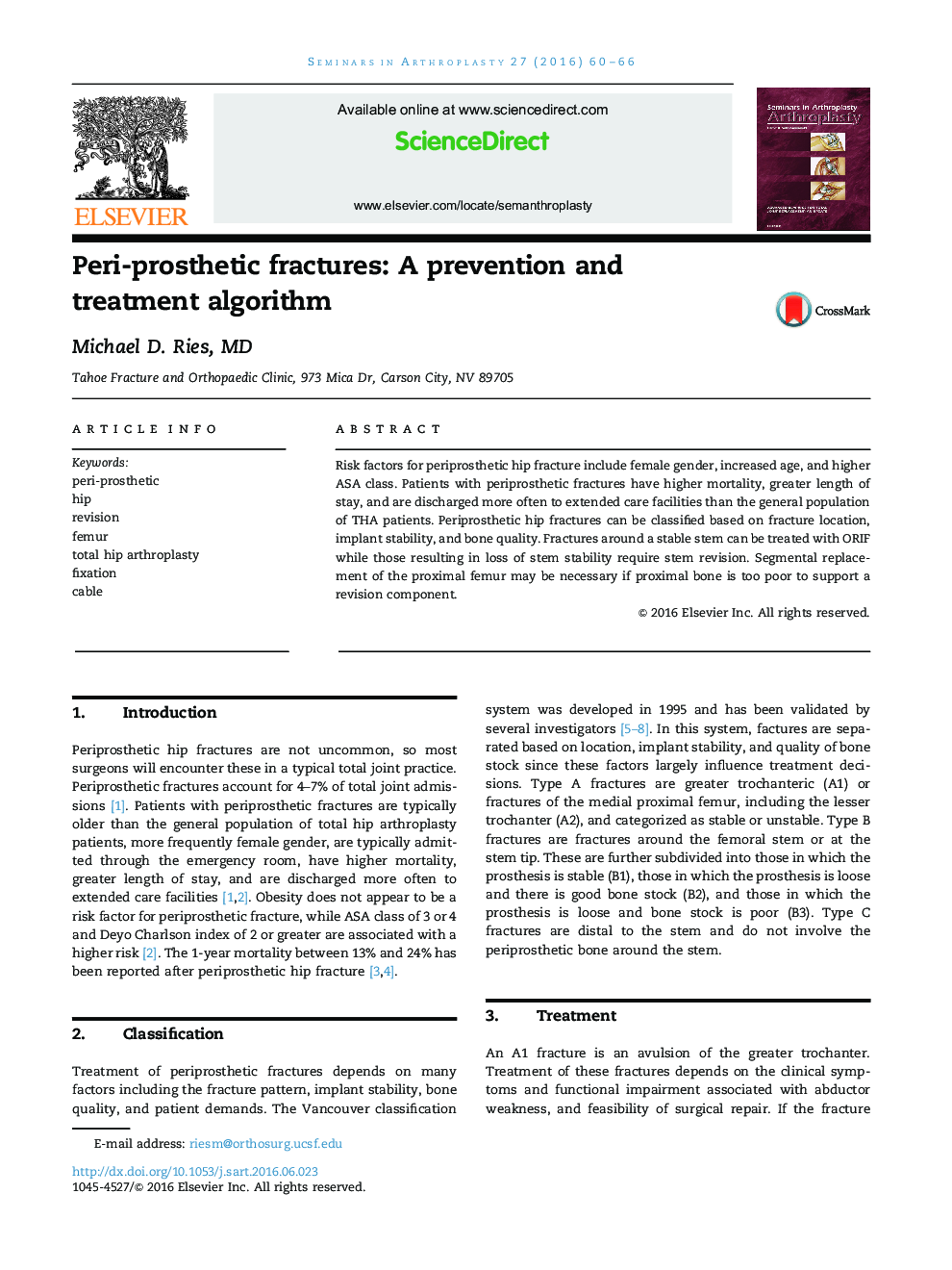| Article ID | Journal | Published Year | Pages | File Type |
|---|---|---|---|---|
| 5712385 | Seminars in Arthroplasty | 2016 | 7 Pages |
Abstract
Risk factors for periprosthetic hip fracture include female gender, increased age, and higher ASA class. Patients with periprosthetic fractures have higher mortality, greater length of stay, and are discharged more often to extended care facilities than the general population of THA patients. Periprosthetic hip fractures can be classified based on fracture location, implant stability, and bone quality. Fractures around a stable stem can be treated with ORIF while those resulting in loss of stem stability require stem revision. Segmental replacement of the proximal femur may be necessary if proximal bone is too poor to support a revision component.
Related Topics
Health Sciences
Medicine and Dentistry
Orthopedics, Sports Medicine and Rehabilitation
Authors
Michael D. MD,
